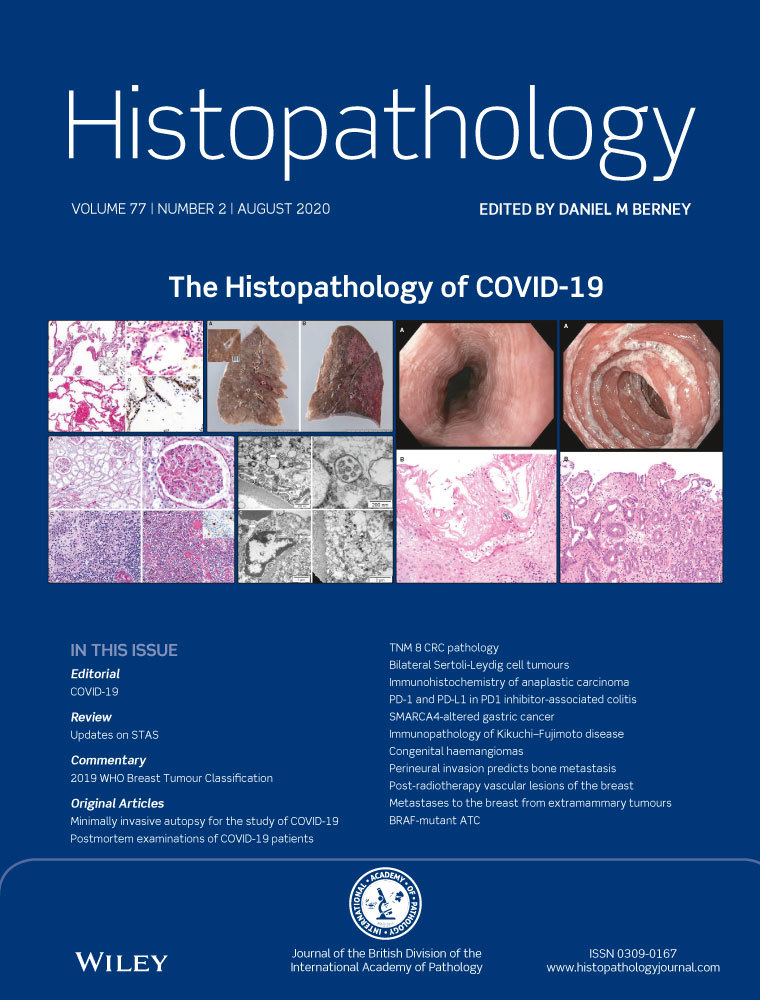Post-radiotherapy vascular lesions of the breast: immunohistochemical and molecular features of 74 cases with long-term follow-up and literature review
Abstract
Aims
A wide range of post-radiotherapy (RT) vascular lesions can occur, ranging from benign lymphangiomatous papules of the skin (BLAPs), to atypical vascular lesions (AVLs) and post-RT angiosarcomas (ASs). The relationship between benign and malignant post-RT breast lesions and their prognostic features are still controversial. The aims of this study were to investigate the relationship between benign and malignant mammary post-RT vascular lesions and to define post-RT AS prognostic features.
Methods and results
Seventy-four post-RT vascular lesion cases were obtained and stained with antibodies against CD34, CD31, D2-40, Ki67, and c-Myc. Mutational analysis was performed by deep sequencing for the following genes: KRAS, NRAS, HRAS, BRAF, PIK3CA, TP53, NOTCH1, PTEN, CDKN2A, EGFR, AKT1, CTNNB1, hTERT, and PTPRB. Post-RT AS cases were graded according to a previously reported breast AS grading system. AVL cases showed a low number of HRAS and hTERT mutations, whereas post-RT AS cases showed a high frequency of EGFR, TP53, HRAS and hTERT mutations. On follow-up, all BLAP and AVL patients were alive with no evidence of disease. Post-RT AS 5-year overall survival declined with the increase in grade, as follows: 85.7% for grade 1, 83.3% for grade 2, and 40.4% for grade 3.
Conclusions
Our findings confirm that BLAP and AVL have a good prognosis, and that post-RT AS prognosis is strongly related to histological grading. On molecular analysis, AVL and post-RT AS shared HRAS and hTERT mutations, suggesting a relationship between the two lesions.
Conflicts of interest
The authors state that they have no conflicts of interest.




